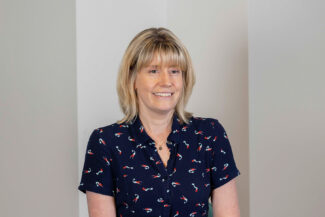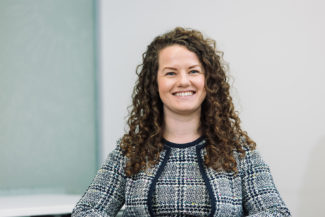AI and patentable inventions – what now?
Thaler v Comptroller General of Patents [2021] EWCA Civ 1374 is a case that raises interesting questions about the patent system in the UK and whether legislative changes are required in view of recent technological advances, in particular those related to AI.
09.06.2022
A central question in the case was whether English law allows an AI machine to be listed as an inventor for a patent application. The short answer resulting from the judgment is no. Perhaps then, it is more interesting to look at the debate that has arisen surrounding what the UK law on AI-generated advances and inventorship should be, rather than what it is. But first, a brief summary of the case.
Dr Thaler is the creator of an AI machine named DABUS, described as an artificial neural system capable of generating ideas and having “brain-like” features. Dr Thaler submitted two patent applications naming DABUS as an inventor. Further, on the statement of inventorship (required under section 13(2) of the Patents Act 1977), Dr Thaler claimed to be entitled to the grant of these patents as the owner and creator of DABUS. Dr Thaler’s applications were rejected by the UKIPO, as only natural persons may be named as inventors and DABUS was not capable of owning rights and had no power to transfer them. On this basis, Dr Thaler had not shown he was entitled to file the applications and they were deemed withdrawn. This decision was upheld by the Patents Court.
Dr Thaler’s case then came before the Court of Appeal and notably, two of the country’s most experienced patents judges, Lord Justice Birss and Lord Justice Arnold (along with Lady Justice Laing). Ultimately, Mr Thaler’s appeal was rejected by a majority of 2 to 1 with Lord Justice Birss giving the dissenting judgment. All three judges agreed that DABUS could not be an inventor within the meaning of the Patents Act, because an inventor must be a person. However, Lord Justice Birss disagreed with the other judges on whether Dr Thaler was entitled to apply for patents to DABUS’ inventions. In his view, it was sufficient that Dr Thaler had provided a statement to the UKIPO identifying to the best of his belief who the inventor was and how he came to be entitled to apply for the inventions. The public had thus been provided with sufficient information on the derivation of the inventions and, therefore, the applications should not have been deemed withdrawn. The fact that the inventor was stated to be an AI-machine should not have affected this.
So for the time being in the UK, AI machines cannot be named as inventors on patent applications. However, this is not the case everywhere. Dr Thaler has filed patent applications naming DABUS as the inventor in numerous countries and while the EPO, the German Federal Patent Court and a US District Court reached a similar conclusion to the UK Court, the Australian Federal Court recently held that AI systems could be inventors under Australian patent law (although a final decision is still pending). The decision of the German Federal Patent Court suggests an alternative solution whereby the specification could state that the named inventor is a substitute for the AI system. In South Africa, where patent applications do not undergo substantive examination before grant, Mr Thaler was also granted a patent having DABUS listed as an inventor.
It is therefore pertinent to ask whether the UK position is sustainable long term. Last year, the UKIPO sought views on AI and IP generally and a further consultation, launched on 29 October 2021, promises to look at policy options including legislative changes. The responses to the UKIPO consultation highlight the role of IP in rewarding innovation and concerns have understandably been raised that if AI generated inventions are not protected by IP they might not be shared, with innovators preferring instead to rely on the law of trade secrets and the protection of confidential information. A draft report presented to the European Parliament on November 2021 by its Special Committee on AI in the Digital Age also highlights the need for IP to “continue to incentivise and protect AI innovators by granting them patents as a reward for developing and publishing their creation”.
Perhaps the lack of protection for AI inventions is less concerning in the context of more traditional advances in the life sciences sector, where information relating to new dosage regimens, indications and safety measures will ultimately be published. But what about those instances where AI really is breaking new ground? AI has found a growing role in the identification of optimal dosage regimens, particularly in the field of cancer treatments. Machine learning has also been employed to predict the drug sensitivity and resistance of patients with particular types of cancer. If these AI generated inventions are not afforded patent protection will this lead to a decrease in AI-based research and innovation?
AI technologies serving the biotech industry might soon become indispensable as they phase out older methods of data analysis and screening. In this context, will the involvement of AI systems require any different treatment to other platform technologies? High throughput screening using tools such as artificial neural networking also raises an interesting conundrum. Such processes might identify new targets that would have taken many years to develop or perhaps never have been identified by a scientist working at the bench. It will be interesting to see if arguments emerge that the imaginary skilled person, through whom patent lawyers assess many questions, would be equipped with certain AI tools.
There is no doubt that AI-driven research tools will continue to expedite drug discovery and development, leading to savings in time and cost and offering those with access a competitive advantage. As it stands, AI-generated results that might comprise a patentable invention are in something of a grey area as regards the entitlement to file patents. It will be fascinating to see whether any legislative changes arise to usher in a new era of AI inventors or even a new form of IP protection.

Claire Wilson
Author

Chloe Dickson
Author
